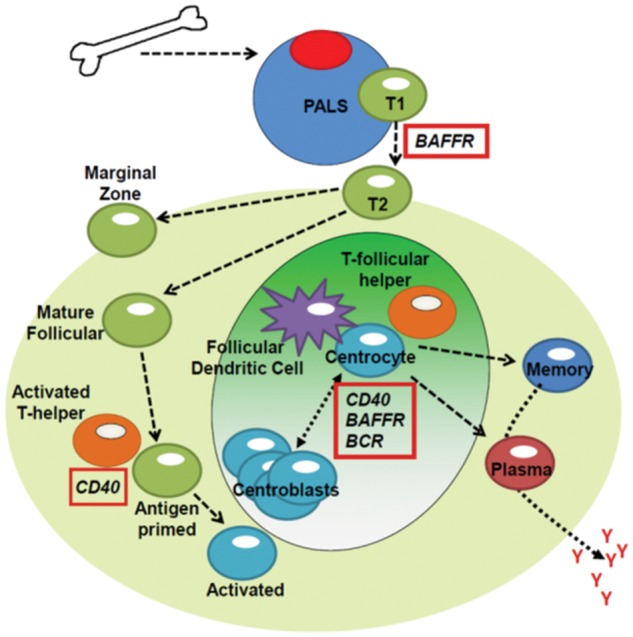FIGURE 4.

Role of NF-κB signaling in B cell maturation and differentiation. B cells exit the bone marrow and home to secondary lymphoid organs. The B cell exits from the arteriole into the peripheral arteriole lymphoid sheath (PALS) as a T1 B cell. Here, the B cell requires BAFF signaling to survive and mature to a T2 B cell. The T2 B cell can mature to a marginal zone B cell or follicular B cell. The mature follicular B cell can be activated by the detection of cognate antigen and CD40 costimulation. The activated B cell enters the germinal center, where it competes for antigen and costimulatory factors presented on follicular dendritic cells and produced by T follicular helper cells. Strong antigen binding and receipt of costimulatory NF-κB-dependent signaling through CD40 and BAFF allows the B cell to mature into a memory B cell or a plasma cell.
